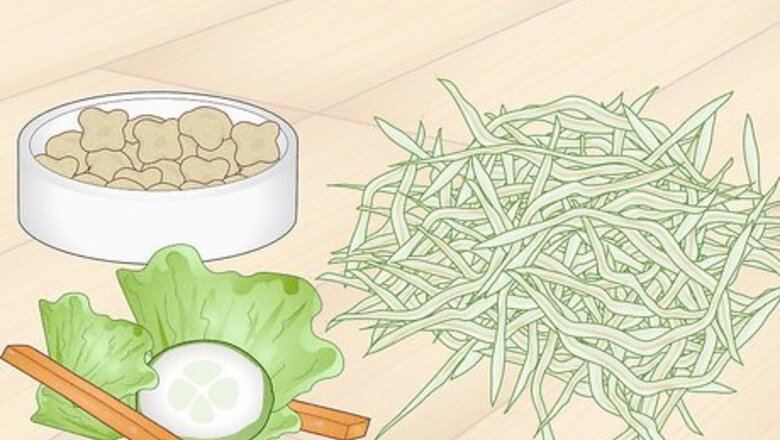
views
Feeding a Healthy Diet
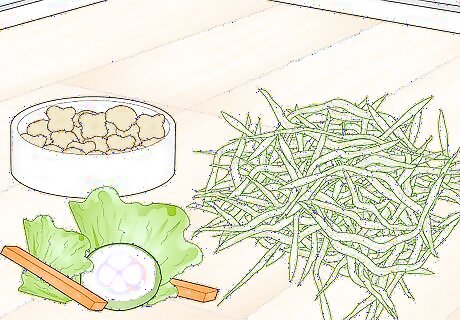
Understand the importance of a balanced diet. Guinea pigs are susceptible to many health issues if they aren't fed the proper nutrition. The most common cause of sudden death in cavies is gut stasis, which is where the digestive system shuts down from not ingesting enough food. Guinea pigs are strict herbivores with a diet consisting of 80% hay, 15% vegetables, and 5% pellets. Guinea pigs are also prone to malnutrition, scurvy, and urinary problems which are all related to an improper diet.
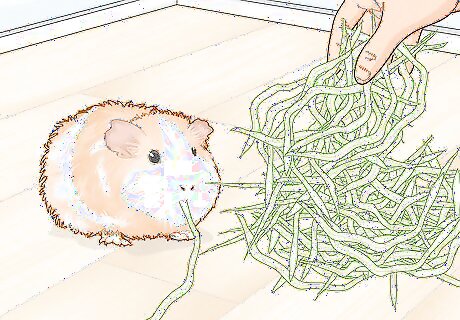
Provide your guinea pig with unlimited hay. Grass hay is the primary staple of your guinea pig's diet, accounting to 80%. It's important to provide large bundles of hay in your guinea pig's enclosure to promote continuous grazing to contribute to their digestive and dental health. Hay contains large amounts of fibre which is required by your guinea pig's digestive system. The best hay you can provide is fresh, green, grassy hay. To check if your hay is fresh, it should have a green-tinge and be soft and pliable in texture. You may also notice a sweet scent. Timothy, oaten, orchard, and meadow hay are a few popular varieties. Do not restrict your guinea pig's hay with hay racks. These items are hazards and do not promote healthy grazing. Large piles placed on the floor are best.
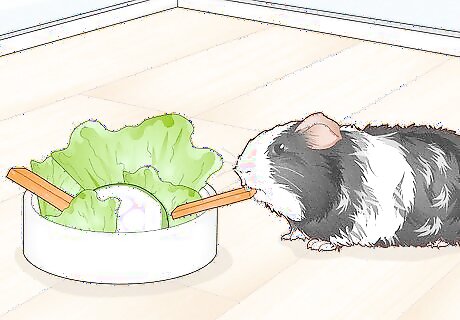
Feed a variety of fresh vegetables. Guinea pigs need one cup of green leafy vegetables a day, accounting to 15% of their whole diet. While hay is important for fibre, vegetables are necessary to provide nutrients and vitamins that your guinea pig cannot produce or receive from hay or pellets alone. Scurvy is a common cause of death for guinea pigs, which is generally a result of lack of vitamin C in their diet. Guinea pigs cannot produce this vitamin on their own. Red bell peppers (or capsicums) are a great source of vitamin C that can be fed on a daily basis. Guinea pigs can be fed different vegetables in a rotation of 2-4 times a day, which includes; kale, spinach, carrots, romaine lettuce, broccoli, tomatoes, celery, basil, parsley, coriander, cucumber, asparagus, and peas.
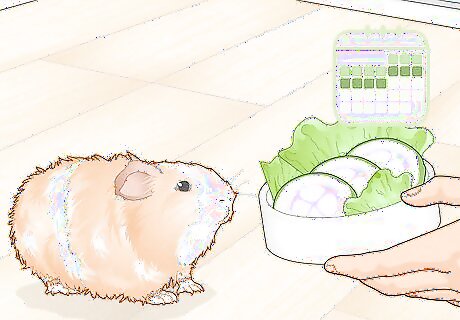
Limit certain vegetables to 1-2 times a week. Vegetables that retain high amounts of water, such as lettuce and cucumbers, should be limited. Not only can they cause stomach upset and bloating, but they are also void of nutrients. High-calcium vegetables, such as spinach and kale, should also be limited to minimise the risk of developing bladder stones.
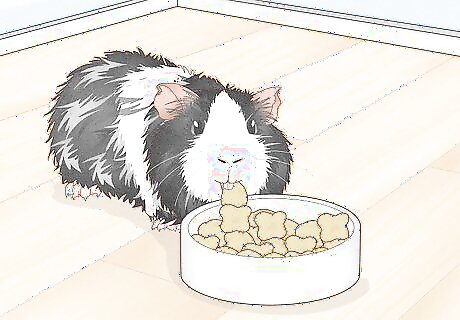
Supplement your guinea pigs diet with pellets. High-quality pellets that are fortified with vitamin C should account for 5% of your guinea pig's diet. 1/8 cup per guinea pig is suitable. Oxbow adult guinea pig pellets are a popular brand. Choose timothy hay-based pellets for adult guinea pigs. Alfalfa hay-based pellets should only be fed to guinea pigs under 6 months of age. Avoid rabbit pellets, and muesli or mixed brands. Purchase plain nuggets as colourful morsels of food can encourage selective feeding.
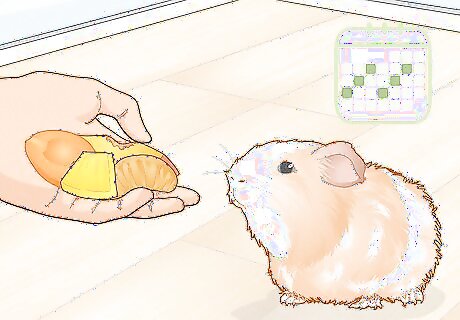
Limit the amount of sugary treats your guinea pig receives. Fruit can be fed 1-2 times a week as a treat. Commercial treats, such as pea flakes, should only be fed 1-2 times a day. Do not feed your guinea pigs treats that contain dairy, such as yoghurt drops, or treats that contain nuts or seeds.
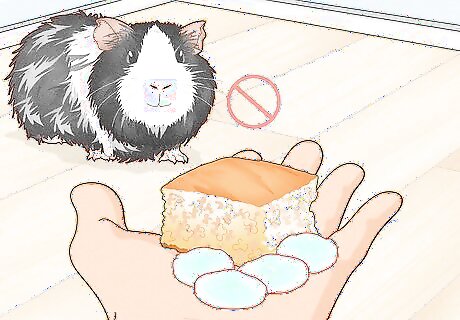
Research which foods cannot be fed to guinea pigs. Guinea pigs are herbivorous animals. They cannot digest meat, dairy, or other "human foods". This includes bread, crackers, and yoghurt drops. There are also a few vegetables that should not be given to guinea pigs due to their dangerous properties. This includes avocado, rhubarb, potato, onions, iceberg lettuce, tomato stems, and garlic. Never feed guinea pigs wheats, grains, seeds, or nuts.
Setting Up a Suitable Enclosure
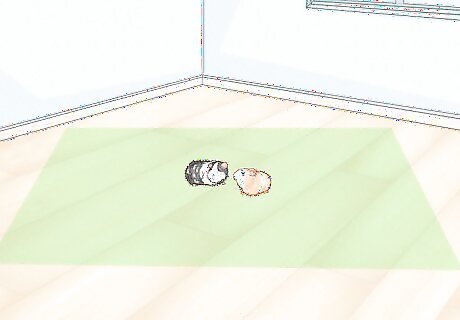
Give your guinea pigs plenty of space. 1-2 guinea pigs require 7.5 square feet of space at a minimum, however, 10.5 square feet is preferred. The more space you can provide your guinea pig, the happier they will be. Small animal cages often utilise vertical space to increase living area and encourage climbing, digging and burrowing. However, guinea pigs rely on floor space. Ramps and platforms at low heights provide variety, but guinea pigs need room to exercise, even with daily playtime outside of the cage.
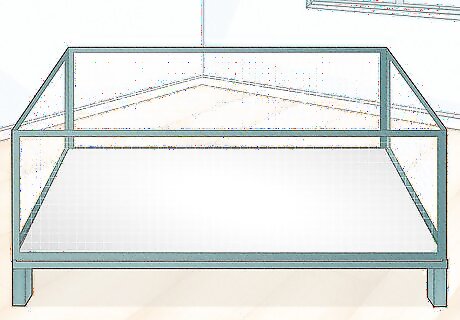
Choose a cage with a solid base. Guinea pigs have sensitive feet that are susceptible to foot problems, such as bumblefoot. Mesh and wire flooring can cause discomfort, and therefore isn't advised.
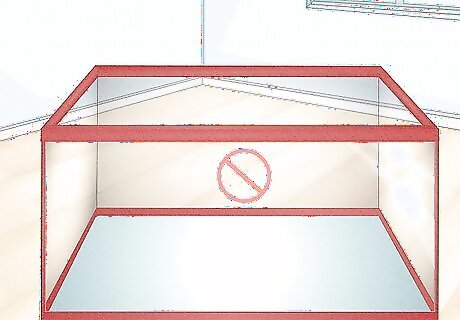
Avoid glass tanks and aquariums. Glass tanks and aquariums receive limited ventilation, with the only source of airflow coming from the top of the cage. Because of the inadequate airflow, the tank or aquarium easily traps ammonia in the air, which can cause respiratory issues in guinea pigs.
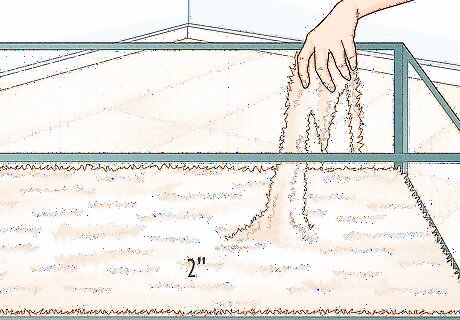
Fill the base of the cage with 2 inches of bedding. Fleece, wood shavings, and paper bedding are among the most desirable bedding materials. However, it's important to research the type of bedding and brand you'd like to use, as now all materials are safe or absorbent. Cedar wood shavings are toxic. Pine can be used, providing that it is kiln-dried and dust-extracted. Otherwise, guinea pigs are prone to developing respiratory issues due to the phenol and dust. Do not use straw, corn cob bedding, sand, or cat litter. These types of bedding are not only dangerous to guinea pigs, but they are uncomfortable for their feet as well.
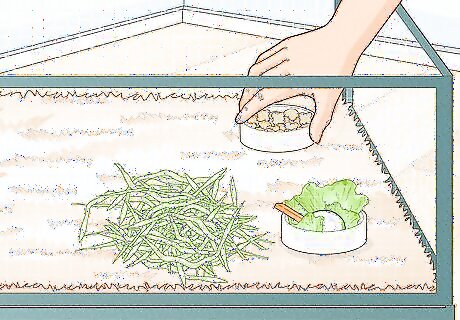
Set up a feeding station inside the cage. Guinea pigs frequently graze throughout the day to keep their digestive systems moving and teeth healthy. Some cages, such as Midwest cages, have a split section for feeding, to keep the area hygienic. Place a pile of hay on the floor. While it isn't advised to use hay racks, as they can be dangerous to guinea pigs, you can use a pan or litter tray to contain the hay. It's recommended to place large bundles of hay on the floor to encourage natural grazing. Place at least one medium-sized bowl on the ground to fit one cup of vegetables per guinea pig. You can choose to purchase two bowls if your guinea pigs are quite territorial. Place another smaller bowl on the ground to fit 1/8 cup of pellets for each guinea pig.
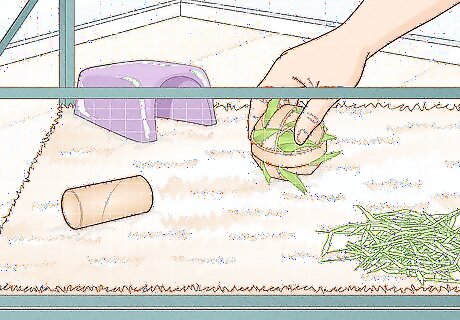
Place a few accessories and toys inside of their cage. Toys and obstacles are a big part in making sure your guinea pig is happy and lives an enriched lifestyle. Research the type of toys that are safe for your guinea pigs. Exercise wheels, balls, and metal hay or treat balls are not safe for guinea pigs. Chew toys, hay stuffers, plastic treat balls, lounging logs, ramps, hammocks, corner curtains, and tunnels, are a few safe and recommended toys you can buy for your guinea pig.https://www.thesprucepets.com/product-guinea-pigs-must-have-2662211
Grooming Your Guinea Pig
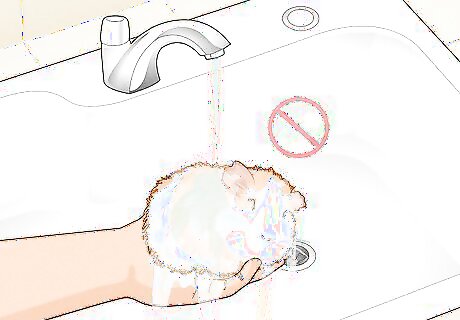
Refrain from bathing your guinea pig too often. Guinea pigs have sensitive fur and skin. Frequent baths and application of shampoos can irritate and dry out their skin. Ideally, guinea pigs should only be bathed once a year unless advised by a vet.

Purchase a special small animal shampoo. You can purchase a shampoo brand that specialises in guinea pigs from a pet store or your local vet clinic. Do not use human or dog shampoos on your guinea pig, as these can be too harsh on their skin.
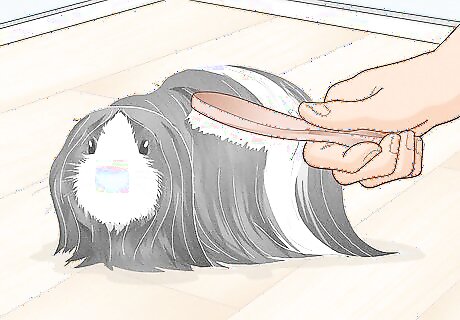
Brush your guinea pig's hair frequently. While brushing your guinea pig's fur isn't necessary if they are short-haired, such as Abyssian or American breeds, if your guinea pig is a long-haired breed, they should have their hair brushed every day with a soft-bristled brush to prevent matting.
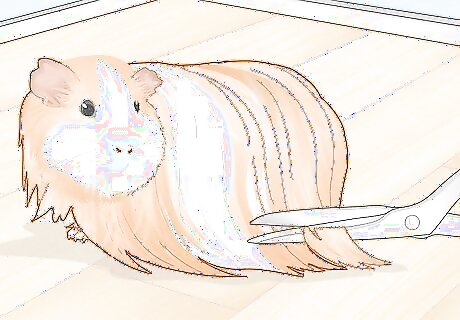
Trim your guinea pig's hair every so often. Long-haired breeds, such as Shelties or Peruvians, should have the bottoms of their hair trimmed every two weeks, and a full trim every month. Trimming your guinea pig's hair prevents matting and knots from forming.
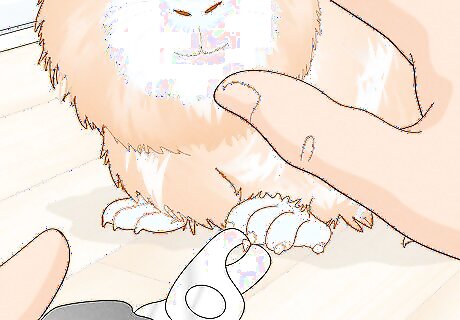
Cut your guinea pig's nails. Guinea pigs should have their nails trimmed with a small animal nail clipper at least once a week to prevent overgrowth. Be careful as to not cut too short, or cut the quick. The quick is the blood vessel inside the nail, which can hurt your guinea pig if it is cut.
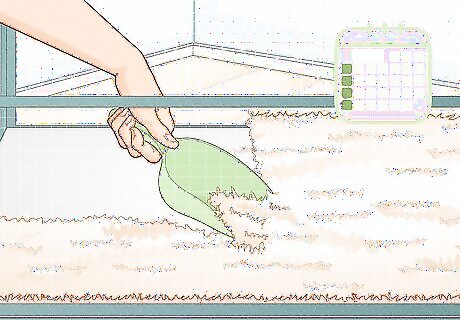
Clean your guinea pig's cage at least once a week. Guinea pigs produce a high amount of urine and droppings on a weekly basis. Without regular cleaning, the build-up of ammonia can lead to a URI. How often you will need to clean their cage depends on the size of the cage, the bedding material, and how many guinea pig's you own. Spot-clean their bedding every day to prevent urine scald or bumblefoot.
Caring for Your Guinea Pig's Health
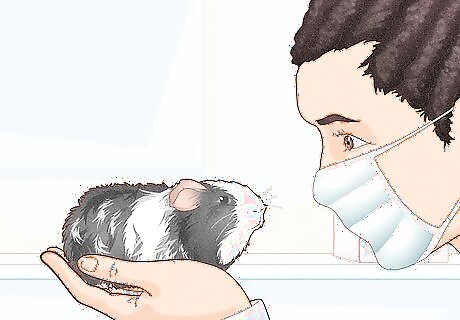
Schedule an annual check-up with a vet. Look for an exotic vet that specialises in guinea pig care. Often times, guinea pigs are notorious for hiding symptoms of disease or illness. An annual checkup can ensure that your guinea pig has been properly looked over for any underlying health issues. At the same time, you can be ensured that your guinea pig is healthy, and is being fed the proper diet. It's important to ask your veterinarian any questions at the time of your guinea pig's exam.
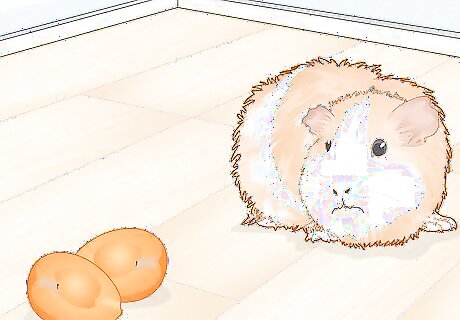
Monitor your guinea pig for any changes in behaviour. Guinea pigs are notorious for hiding symptoms of illness until their condition becomes fatal. Changes of behaviour are the first signs that guinea pigs show when they are sick. Lack of appetite, lethargy, coughing, laboured breathing, and a puffed-up coat are all signs of illness. If you suspect that your guinea pig is ill, take them to the vet as soon as possible.
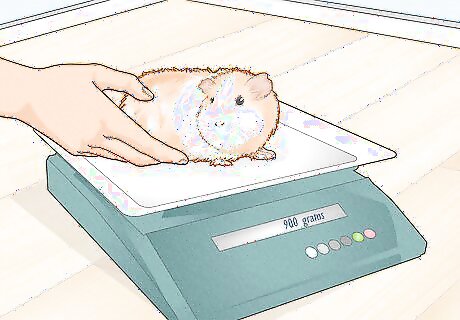
Weigh your guinea pig weekly. By weighing weekly, you are using one of the best tools available for monitoring your guinea pig's health. A dramatic weight drop could be a sign of an underlying health issue. On average, male guinea pigs weigh 900 to 1200 grams, and female guinea pigs weigh 700 to 900 grams. One ounce weight fluctuation is normal, however, 2-3 ounces is dangerous. Use kitchen scales to acquire an accurate estimate of your guinea pig's weight in grams.










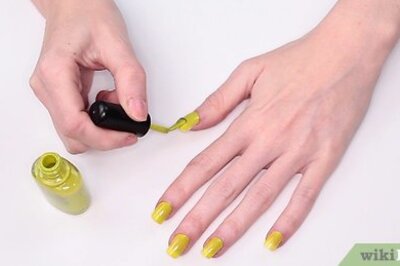
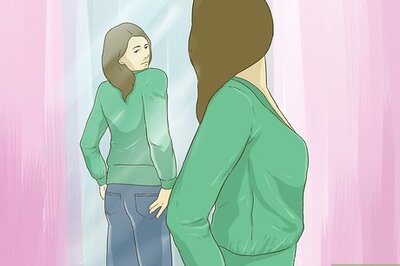








Comments
0 comment